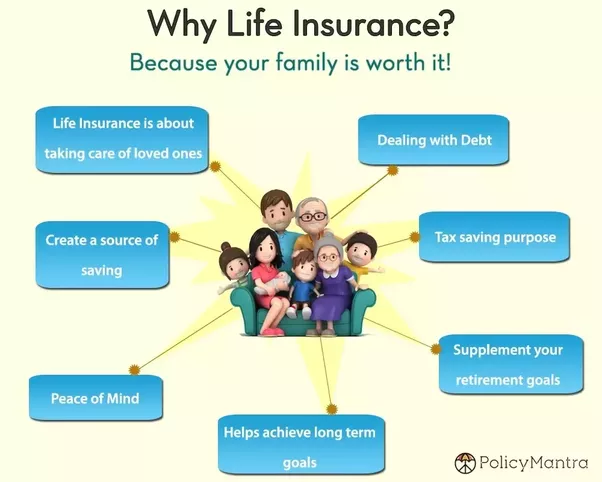The 7-Minute Rule for Pacific Prime
The 7-Minute Rule for Pacific Prime
Blog Article
The Buzz on Pacific Prime
Table of Contents3 Easy Facts About Pacific Prime DescribedFacts About Pacific Prime UncoveredPacific Prime Fundamentals ExplainedFacts About Pacific Prime RevealedThe smart Trick of Pacific Prime That Nobody is Talking About

This is because the information were gathered for a duration of strong economic efficiency. Of the estimated 42 million individuals who were without insurance, all but concerning 420,000 (about 1 percent) were under 65 years old, the age at which most Americans end up being qualified for Medicare; 32 million were adults in between ages 18 and 65, about 19 percent of all adults in this age; and 10 million were children under 18 years of age, regarding 13.9 percent of all youngsters (Mills, 2000).
These quotes of the variety of individuals uninsured are produced from the yearly March Supplement to the Existing Populace Survey (CPS), carried out by the Demographics Bureau. Unless or else noted, national price quotes of individuals without medical insurance and percentages of the populace with different sort of protection are based on the CPS, the most commonly made use of resource of price quotes of insurance policy coverage and uninsurance rates.
Getting The Pacific Prime To Work

Still, the CPS is specifically valuable due to the fact that it generates yearly quotes relatively rapidly, reporting the previous year's insurance coverage approximates each September, and due to the fact that it is the basis for a regular collection of quotes for greater than two decades, permitting evaluation of trends in coverage over time. For these factors, in addition to the substantial use of the CPS in other researches of insurance policy protection that exist in this report, we rely upon CPS estimates, with limitations kept in mind.

The price quote of the variety of without insurance individuals expands when a population's insurance policy condition is tracked for numerous years. Over a three-year period starting early in 1993, 72 million people, 29 percent of the united state population, were without insurance coverage for a minimum of one month. Within a single year (1994 ), 53 million people experienced at the very least a month without protection (Bennefield, 1998a)
Six out of every 10 without insurance adults are themselves utilized. Although working does boost the probability that one and one's household participants will have insurance policy, it is not an assurance. Also members of family members with two permanent breadwinner have almost a one-in-ten possibility of being uninsured (9.1 percent without insurance price) (Hoffman and Pohl, 2000).
Not known Facts About Pacific Prime
New immigrants make up a substantial percentage of people without wellness insurance. One analysis has actually connected a significant part of the current development in the dimension of the united state uninsured populace to immigrants that arrived in the country between 1994 and 1998 (Camarota and Edwards, 2000). Current immigrants (those that came to the United States within the previous 4 years) do have a high price of being without insurance (46 percent), but they and their children represent just 6 percent of those without insurance policy across the country (Holahan et al., 2001).
The relationship between medical insurance and access to care is well established, as documented later in this chapter. The relationship in between wellness insurance policy and health and wellness results is neither direct nor simple, a comprehensive medical and health services study literary works links health insurance protection to enhanced access to care, much better quality, and boosted personal and populace health and wellness status.
Degrees of analysis for examining the results of uninsurance. It focuses especially on those without any health and wellness insurance for any type of size of time.
About Pacific Prime
The troubles faced by the underinsured remain in some respects similar to those dealt with by the without insurance, although they are generally less extreme. maternity insurance for expats. Uninsurance and underinsurance, nevertheless, include distinctly different plan issues, and the techniques for addressing them may differ. Throughout this study and the five records to comply with, the primary focus gets on individuals with no medical insurance and therefore no help in paying for health and wellness care beyond what is available through charity and safeguard establishments
Wellness insurance coverage is a powerful factor affecting invoice of care because both people and medical professionals reply to the out-of-pocket rate of services - https://pacificpr1me.weebly.com/. Medical insurance, nonetheless, is neither necessary neither sufficient to access to clinical solutions. However, Find Out More the independent and straight impact of medical insurance coverage on access to health services is well established.
Others will certainly acquire the health and wellness care they require also without health and wellness insurance coverage, by spending for it out of pocket or seeking it from providers that provide treatment cost-free or at extremely subsidized prices. For still others, health and wellness insurance alone does not make sure invoice of treatment as a result of other nonfinancial barriers, such as a lack of healthcare carriers in their neighborhood, minimal access to transportation, illiteracy, or etymological and cultural distinctions.
7 Simple Techniques For Pacific Prime
Official research study regarding without insurance populations in the United States dates to the late 1920s and early 1930s when the Board on the Price of Treatment produced a series of reports about financing medical professional workplace visits and hospitalizations. This problem ended up being prominent as the varieties of clinically indigent climbed up throughout the Great Clinical depression.
Report this page